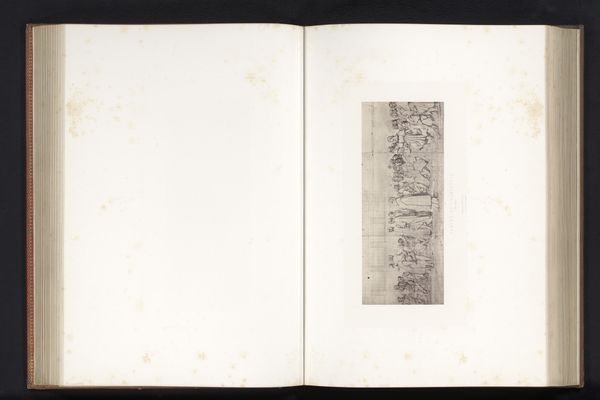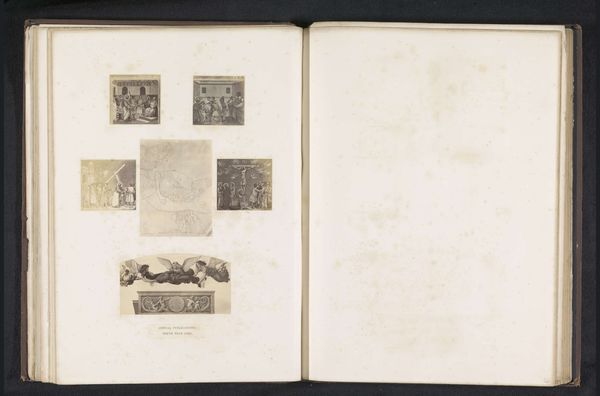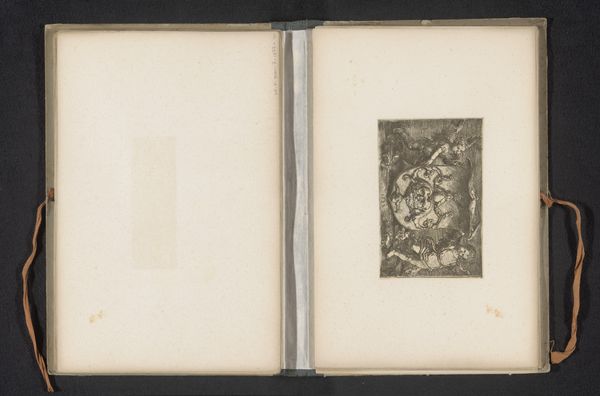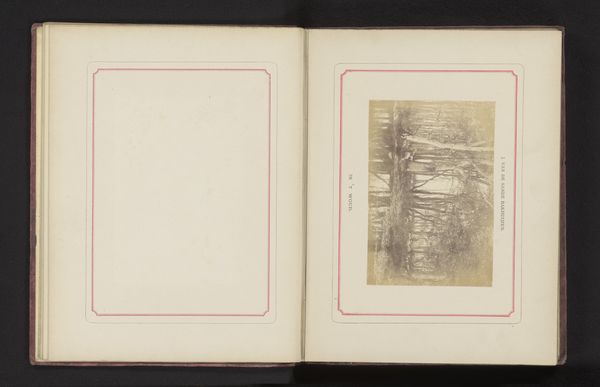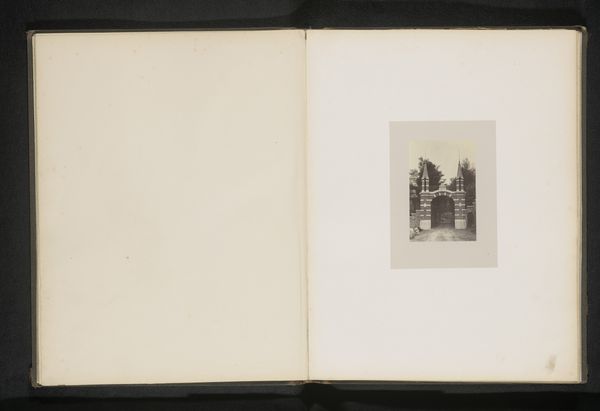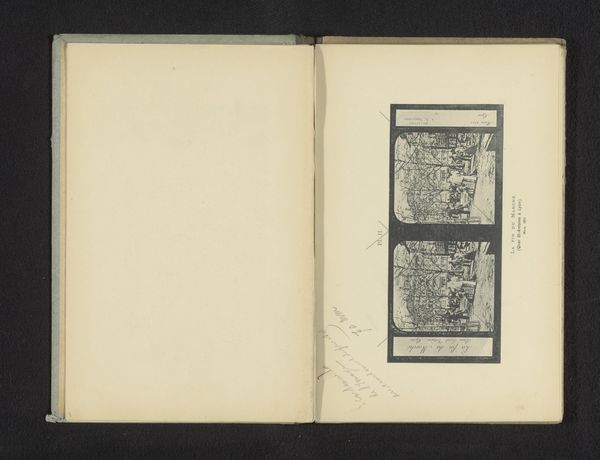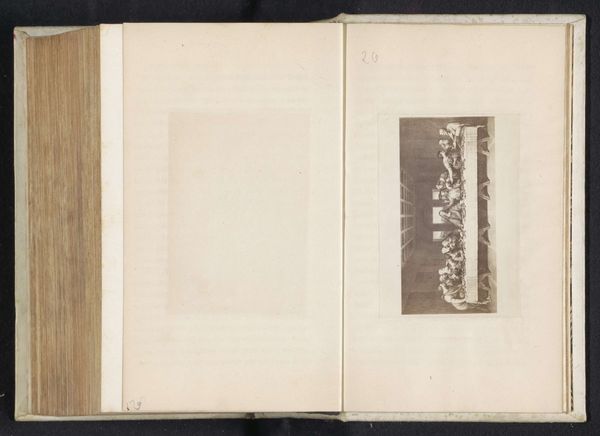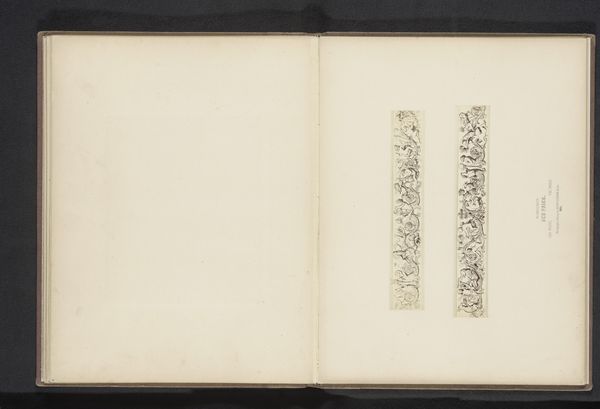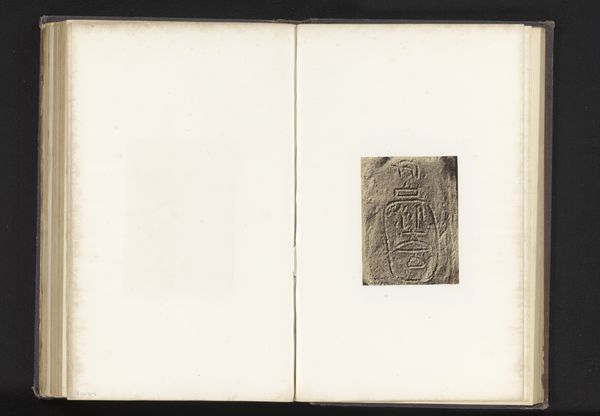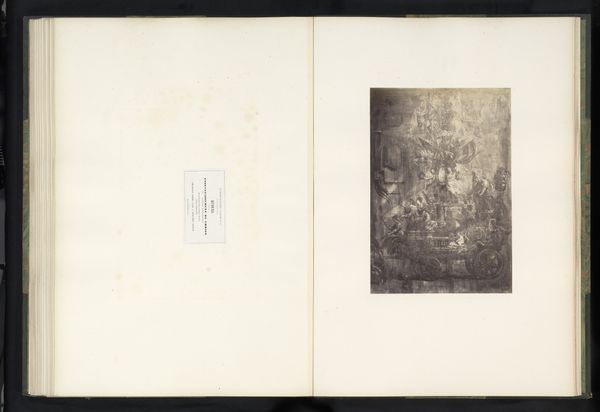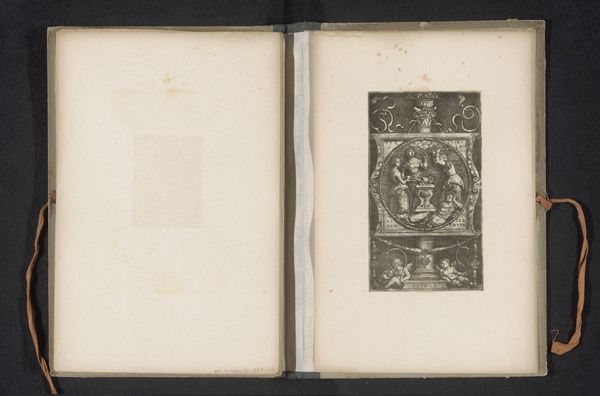
Fotoreproductie van een tekening van de terechtstelling van Elisabeth van Frankrijk door Paul Delaroche before 1858
0:00
0:00
Dimensions: height 158 mm, width 275 mm, height 252 mm, width 350 mm
Copyright: Rijks Museum: Open Domain
Curator: This work is a reproduction of a drawing by Paul Delaroche, dating from before 1858, and depicting the execution of Élisabeth of France. Editor: Well, the immediate thing I notice is how muted and somber the image is. It's executed on what looks like aged paper, the lines delicate but firm. It evokes a real sense of foreboding and finality through the limited use of materials. Curator: It certainly does. The original subject matter itself, Élisabeth’s execution during the French Revolution, was heavily charged politically. Reproductions like this, circulated widely, played a role in shaping public memory of the event and in constructing narratives about revolutionary violence. It seems part of a strategy of using imagery to instill certain values or perspectives. Editor: Right, and if you look at the marks of the paper itself, it looks hand-drawn, like there was careful preparation put into each mark, yet made accessible as a reproduction, which is interesting from a material perspective. The original intent, labor, and consumption were deliberately distanced but maintained within the context of reproducibility. Curator: Absolutely. Think about where such an image would have been displayed. Not necessarily in a gallery, but potentially in a private collection or even used for educational purposes. These factors would heavily influence its meaning. Editor: And it’s crucial to consider the societal and cultural associations related to executions during this period and how tools of this work served as instruments of power themselves. The artist’s choices in materials directly impact how we perceive the final image and understand what story is told. Curator: Delaroche was a master of historical painting and imagery as propaganda. So, seeing a more delicate study reproduction makes one consider all of the intentions that this artist must have approached such heavy subject matter. Editor: Exactly. By considering materials, we confront the labor and choices shaping political and social narratives, offering insights into cultural reception. It transforms our view from merely observing a history piece to understanding its construction and power it holds. Curator: A vital point. Considering the purpose for these reproduction decisions lets one acknowledge and respect the complex interplay between art and social consciousness during volatile points of historical change. Editor: Agreed. This offers such a compelling insight into not just the story, but how such narratives get told in the first place!
Comments
No comments
Be the first to comment and join the conversation on the ultimate creative platform.
